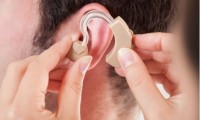-
New smartphone-based method for high-quality gait analysis
- Source: drugdu
- 149
- March 30, 2024
-
FDA Clears First Over-the-Counter Continuous Glucose Monitor
- Source: drugdu
- 85
- March 7, 2024
-
Comprehensive protein analysis reveals potential targets for treating dialysis-related amyloidosis
- Source: drugdu
- 135
- March 4, 2024
-
February 23, 2024
- Source: drugdu
- 86
- February 27, 2024
-
CRISPR Test Diagnoses Mpox Faster Than Lab-Based PCR Method
- Source: drugdu
- 129
- February 16, 2024
-
Smart Palm-size Optofluidic Hematology Analyzer Enables POCT of Patients’ Blood Cells
- Source: drugdu
- 115
- January 19, 2024
-
Smart Palm-size Optofluidic Hematology Analyzer Enables POCT of Patients’ Blood Cells
- Source: drugdu
- 121
- January 19, 2024
-
FDA Clears AnX Robotica’s NaviCam SB for Expanded Indications
- Source: drugdu
- 148
- January 17, 2024
-
Lilly Pens Open Letter Raising Concerns Regarding Use of Mounjaro for Cosmetic Weight Loss
- Source: drugdu
- 177
- January 8, 2024
-
Wearing hearing aids could extend people’s lifespan
- Source: drugdu
- 168
- January 5, 2024
your submission has already been received.
OK
Subscribe
Please enter a valid Email address!
Submit
The most relevant industry news & insight will be sent to you every two weeks.












